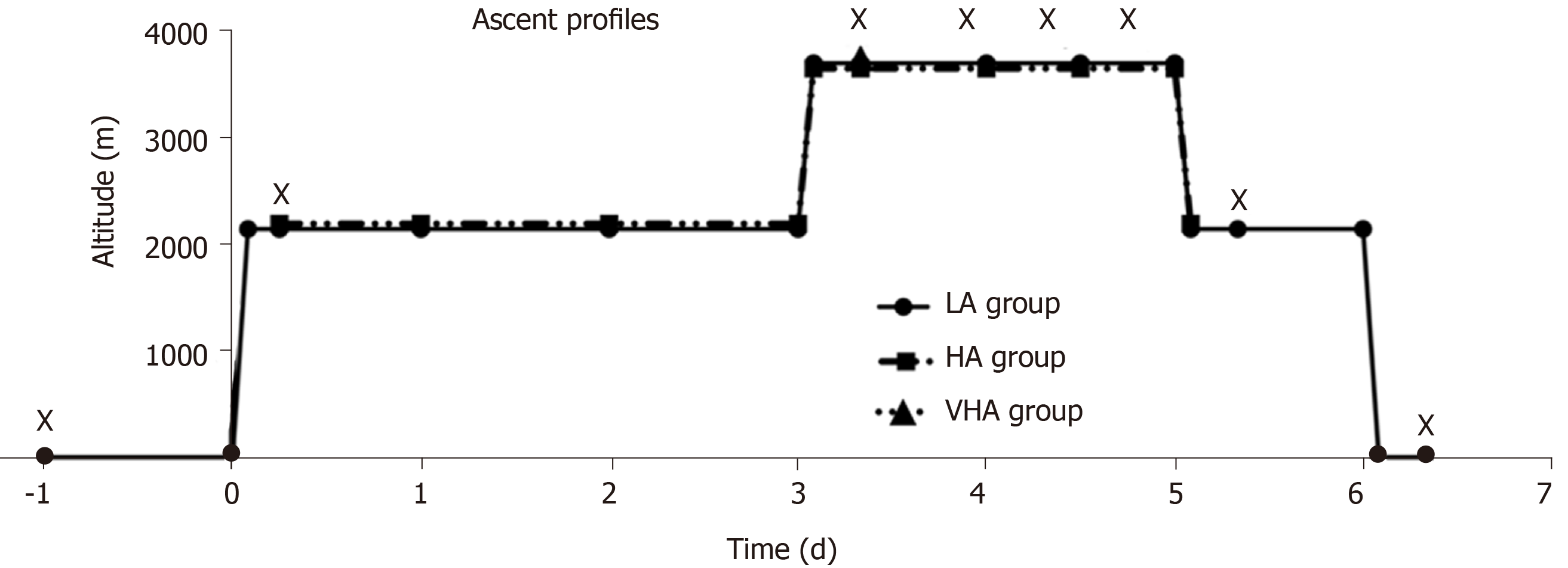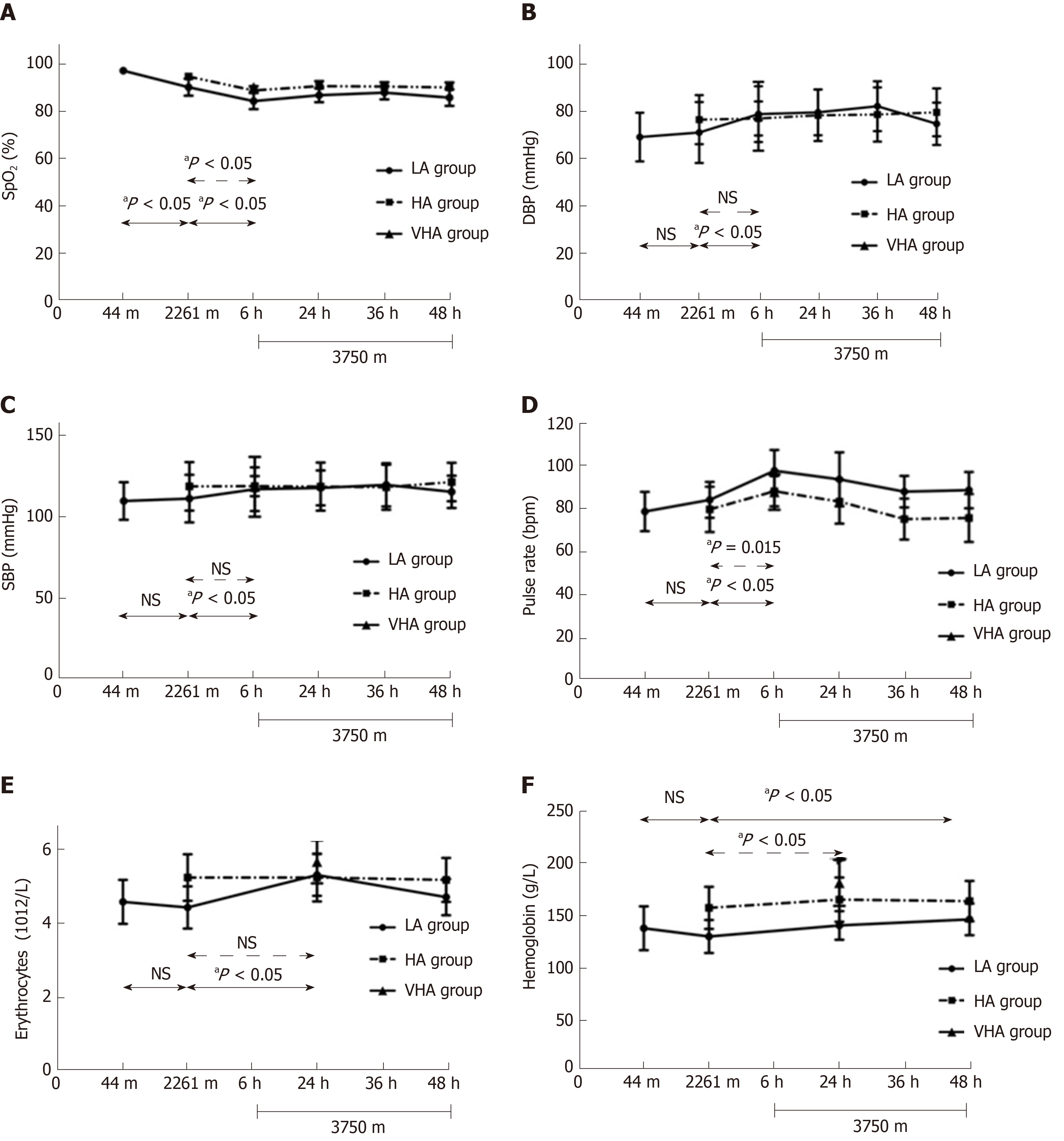Copyright
©The Author(s) 2019.
World J Clin Cases. Oct 26, 2019; 7(20): 3226-3236
Published online Oct 26, 2019. doi: 10.12998/wjcc.v7.i20.3226
Published online Oct 26, 2019. doi: 10.12998/wjcc.v7.i20.3226
Figure 1 Altitude profiles of three groups and examination time points.
The low altitude (LA) group flew to 2261 m above sea level (ASL). Three days later, they flew with the high altitude (HA) group to 3750 m ASL where both groups stayed for 2 d. The LA group flew back to 2261 m ASL and stayed for 1 d before returning to 44 m. Intraocular pressure, vital values and hematological values were measured before and during exposure to 2261 m and 3750 m ASL in LA, HA, and very high altitude groups. X: Examination time points; LA: Low altitude; HA: High altitude; VHA: Very high altitude.
Figure 2 Longitudinal observation of intraocular pressure changes in the low altitude and high altitude groups.
The figure elucidated a gradual and significant decrease in intraocular pressure (IOP) from 44 m [low altitude (LA) baseline] through 2261 m to 3750 m above sea level (ASL) and remained at the 3750 m ASL for 2 d. When the LA group flew back to 2261 m ASL, the IOP did not change. When the LA group flew back to 44 m, the IOP increased but was still lower than LA baseline. The IOPs in the LA group at 2261 m and 3750 m ASL were comparable to that in the native residents. No significant changes were found in the IOP of the high altitude group throughout the observation time at 3750 m compared to that at 2261 m ASL. IOP: Intraocular pressure; LA: Low altitude; HA: High altitude; VHA: Very high altitude.
Figure 3 Scatter plot showed the correlation between intraocular pressure before ascent (Low altitude baseline) as well as intraocular pressure changes at 2261 m and 3750 m above sea level in the low altitude group.
Higher baseline intraocular pressure (IOP) correlated with greater IOP changes at 2261 m (A) and 3750 m above sea level (B) in the low altitude group. IOP: Intraocular pressure; LA: Low altitude; HA: High altitude; VHA: Very high altitude.
Figure 4 Linear graph showing vital and hematological parameters changes in low altitude and high altitude groups after exposure to higher altitude.
A: Oxygen saturation decreased in both groups after exposure to higher altitude; B, C: Systolic blood pressure and diastolic blood pressure in the low altitude (LA) group dropped after exposure to 3750 m above sea level (ASL); D: Pulse rate increased in both groups after exposure to 3750 m ASL; E: Erythrocytes only increased after 1 d exposure to 3750 m ASL in the LA group; F: Hemoglobin increased after flying to 3750 m ASL in both groups. aP < 0.05: Statistically significant; NS: Not significant; SpO2: Oxygen saturation; IOP: Intraocular pressure; SBP: Systolic blood pressure; DBP: Diastolic blood pressure; LA: Low altitude; HA: High altitude; VHA: Very high altitude.
- Citation: Xie Y, Sun YX, Han Y, Yang DY, Yang YQ, Cao K, Li SN, Li X, Lu XX, Wu SZ, Wang NL. Longitudinal observation of intraocular pressure variations with acute altitude changes. World J Clin Cases 2019; 7(20): 3226-3236
- URL: https://www.wjgnet.com/2307-8960/full/v7/i20/3226.htm
- DOI: https://dx.doi.org/10.12998/wjcc.v7.i20.3226












